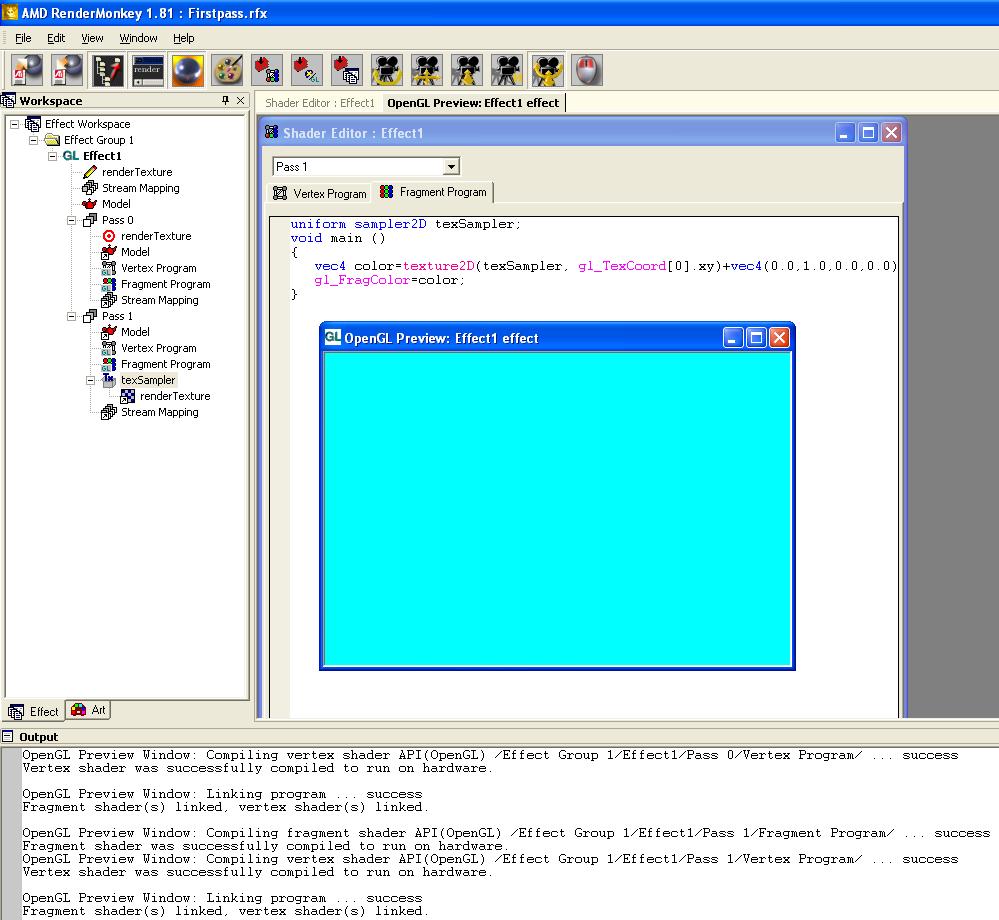Hi,
I have these shaders:
vertex2.vert:
void main()
{
gl_Position = ftransform();
gl_TexCoord[0] = gl_MultiTexCoord0;
}
fragment2.frag:
void main ()
{
gl_FragColor=vec4(0.0,0.0,1.0,1.0);
}
fragment3.frag
uniform sampler2D texSampler;
void main ()
{
vec4 color=texture2D(texSampler, gl_TexCoord[0].st);
gl_FragColor=color+vec4(0.0,1.0,0.0,0.0);
}
and simpleSetup():
public void simpleSetup() {
Quad oQuad=new Quad("myQuad",width,height);
Texture oTexture=new Texture();
TextureState oState=renderer.createTextureState();
oState.setEnabled(true);
oState.setTexture(oTexture,0);
FloatBuffer texCoords = BufferUtils.createVector2Buffer(4);
texCoords.put(-1).put(-1);
texCoords.put(-1).put(1);
texCoords.put(1).put(1);
texCoords.put(1).put(-1);
oQuad.setLocalTranslation(new Vector3f(width/2,height/2,0));
oQuad.setRenderQueueMode(Renderer.QUEUE_ORTHO);
oQuad.setTextureBuffer(0, texCoords);
oQuad.setRenderState(oState);
so=renderer.createGLSLShaderObjectsState();
so.load(getClass().getClassLoader().getResource(
"vertex2.vert"),
getClass().getClassLoader().getResource(
"fragment2.frag"));
so.setEnabled(true);
RenderPass rp1 = new RenderPass();
rp1.setPassState(so);
rp1.add(oQuad);
rp1.setEnabled(true);
GLSLShaderObjectsState so2=renderer.createGLSLShaderObjectsState();
so2.setUniform("texSampler", 0);
so2.load(getClass().getClassLoader().getResource(
"vertex2.vert"),
getClass().getClassLoader().getResource(
"fragment3.frag"));
so2.setEnabled(true);
RenderPass rp2=new RenderPass();
rp2.add(oQuad);
rp2.setEnabled(true);
rp2.setPassState(so2);
passManager = new BasicPassManager();
passManager.add(rp1);
passManager.add(rp2);
rootNode.attachChild(oQuad);
rootNode.updateRenderState();
}
The first shader (fragment2.frag) makes the quad blue and that works. The second one (fragment3.frag )should take the color of the first one and add a value with cyan als result. With that, I get a green screen. Here is, what I have done with rendermonkey:
I also tried something like rp1.setPassState(oState);, but it doesn't work. How do I set render targets correctly or what do I have to fix that I get a cyan image and not a blue or a green one?
Best,
Andreas
